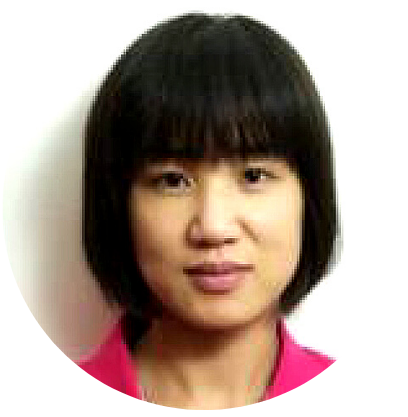About the conference
In the context of COVID-19 outbreak, the good news is that we have something for you to look forward to!
The North American JMAG User Conference in July is maintained!
On July 28th and 29th 2020, Powersys organizes the 5th North American JMAG user
conference. Due to travel restrictions and state-wide lock downs in this period, we have decided that this event will be moved to a VIRTUAL presentation.
This FREE event brings together FEA experts, software users, JMAG developers, JMAG software support team and JMAG marketing personnel. This is a unique opportunity to learn on the latest developments on JMAG, listen to user case studies and exchange on electromagnetics in general.
We hope to see you at the next VIRTUAL JMAG User Conference!
Why attending

Discover JMAG upcoming developments and express your software development needs.

Exchange with JMAG developers and experts.

Discover JMAG user case study presentations providing insigths and real-world experiences.
AGENDA
Day 1
July 28, 2020
Day 2
July 29, 2020
|
7:30 am |
10:30 am |
User Conference Introduction
Olivier Toury, Powersys
Opening Remarks | Introduction to Powersys | Conference Outline
JMAG Next Generation Development
|
8:00 am |
11:00 am |
Development planning of JMAG
Dr. Takashi Yamada, JSOL Corporation
JMAG is constantly being worked on to achieve highly accurate and high-speed simulation. JSOL would like to share our progress from the past year including parallel solvers to accelerate speed as well as GUI improvements aiming for increased productivity of analysis workflow. Analysis technologies we are currently focusing on and our plans for incorporation will also be covered in this presentation. Design exploration is an important topic this year. This presentation will detail the present and future of JMAG.
Advanced Engineering: Multiphysics Design & Development using JMAG
|
8:40 am |
11:40 am |
Multi Physics Design for GM motor Development – 1
Jihyun Kim, General Motors
[Session 1: 40min]
– GM EV strategy, Kim, Jihyun
– Motor loss calculation under PWM switching, Kim, Jihyun
|
9:20 am |
12:20 pm |
Multi Physics Design for GM motor Development – 2
Peng Zhang/Seungwhan Keum, General Motors
[Session 2: 40min]
– Motor Eccentricity 3D FEA and NVH analysis, Zhang, Peng
– Toward accurate motor thermal management: Multi-physics modeling, Keum, Seungwhan
JMAG in Research and Development
|
10:10 am |
1:10 pm |
Switched Reluctance Motor Design for a Forklift Traction Application
Berker Bilgin, Enedym/McMaster University
This presentation shows the design of a switched reluctance motor (SRM) for the traction motor of a forklift application. Design constraints and input parameters are defined according to the specifications of a forklift traction motor. Three-phase induction machines are commonly used for forklift propulsion systems. Several SRM configurations with a higher number of rotor poles than stator poles are designed to compare their characteristics and capabilities. Optimization of initial designs is performed using FEA and genetic algorithm-based controls optimization. The optimization goal is to achieve the design with the lowest volume and mass to increase the torque density and specific volume.
|
10:50 am |
1:50 pm |
Simulation of a Variable Flux Machine in JMAG
Dwaipayan Barman, Concordia University
This presentation analyzes the electromagnetic simulation of a 27 slot 6 pole variable flux machine (VFM) using the JMAG software. The VFM uses AlNiCo9 magnets in which the magnetization level can be easily changed due to lower coercive force when compared to the rare-earth magnets. The magnetization and demagnetization of the VFM are performed using the JMAG software. The simulated back EMF and the electromagnetic torque of the VFM in JMAG software are analyzed at different magnetization levels.
|
11:20 am |
2:20 pm |
Electric Machine Windings with Reduced Space Harmonic Content
Nanjun Tang, IIT Chicago
The reduction of space harmonics in the magnetomotive force (MMF) of electric machine windings has a primary role in improving the machine’s performance, contributing to a more sinusoidal voltage waveform, a smoother torque output, a higher power efficiency, etc. For a better understanding of winding MMF space harmonic behaviors and the effective suppression of the non-working components, a general analysis/design framework and several solution techniques are developed. Windings are designed in this study with the 5th- and the 7th-order space harmonics, and their associated higher order harmonics, simultaneously eliminated. The performance improvements of electric machines equipped with such a winding, including a more sinusoidal airgap magnetic field distribution and the torque ripple reduction, are verified by finite element analysis (FEA) simulations carried out with JMAG.
JMAG in Integrated Motor drive development
|
11:50 pm |
2:50 pm |
Integrated Motor Drive for Traction Application
Dr. Bulent Sarlioglu, WEMPEC
Prof. Bulent Sarlioglu will present the most recent research results to merge high-torque-density traction machines and high-efficiency inverters into state-of-the-art integrated motor drives (IMDs). This concept will package motor and power electronics inside combined housings that will exceed existing traction drive performance metrics in several categories. Several types of electric motors that are candidates for future land-based vehicle traction applications are evaluated. A high-performance surface permanent magnet (SPM) machine drive with a very high constant power speed ratio (CPSR) is proposed using a current source inverter (CSI) for a traction application. The voltage boosting feature of the CSI is investigated to improve the CSI-based SPM machine drive system’s overall efficiency in the constant power region. The integrated motor drive system’s operating characteristics are validated by 2-D finite-element analysis (FEA) simulations carried out.
|
12:30 pm |
3:30 pm |
Poster Display & closing
Sainan Xue, Powersys
JMAG Loss calculation : Iron loss & AC copper Losses
|
7:30 am |
10:30 am |
Introduction
Ved Acharya, Powersys
Emerging Trends: JMAG in New Age Engineering
|
7:45 am |
10:45 am |
Keynote Speech
Tim Lambert, Hyperloop One
Virgin Hyperloop is developing the 5th mode of transportation, and actively building and testing at the component, subsystem, and system level. JMAG has been used throughout the design process for all of the active and passive electromagnetic systems, and continues to be valuable as the company delivers its product offering. Virgin Hyperloop is moving ahead in 2020 with customers and partners worldwide.
|
8.25 am |
11.25 am |
Design and optimization of a high power density permanent magnet motor fabricated using cold spray additive manufacturing
Maged Ibrahim, NRC
A novel interior permanent magnet synchronous motor design comprising alternate layers of Permanent Magnet (PM) and Soft Magnetic Composite (SMC) was developed. The fabrication of the proposed design by cold spray additive manufacturing allows to eliminate the bridges and center-posts that are usually present in laminated interior PM rotors fabricated using conventional technologies. The layered rotor structure is optimized using JMAG optimization function. The resulting motor configuration has lower leakage flux and the absence of high stress regions in the design would allow to operate at higher speeds leading to higher power density. The optimized design can provide an output torque similar to a commercial V-shaped PM rotor while improving the motor efficiency especially at high speed-low torque conditions.
JMAG in Advanced Research Applications
|
9.05 am |
12.05 pm |
Using JMAG to design a High Torque Density Halbach Rotor Coaxial Magnetic Gear
Dr. Bird/ Ho Yin (David) Wong, PSU
This presentation will present the design, analysis, and experimental testing results for a 5.67:1 Halbach rotor magnetic gearbox with a ferromagnetic back support. Using JMAG 3-D finite element analysis software the Halbach magnetic gearbox was calculated to achieve a volumetric torque density of 284N.m/L with only an active region outer diameter of 120mm. The experimental prototype obtained an active region volumetric torque density of 261.4N.m/L.
|
9:35 am |
12:35 pm |
Design and Implementation of High-frequency Magnetic Components for Wired/Wireless Fast Charging Applications
Deepa Vincent & Huynh Sang, Ontario Tech University
The presentation will summarize the use of JMAG FEA simulations for electrified transportation and e-mobility fast charging applications. The modeling, design, analysis, and practical realization of both inductive and capacitive power transfer (IPT/CPT) for wireless charging will be presented. The HF AC-link coil construction and related EMI/EMC shielding design for varied IPT coupler designs will be presented. Furthermore, the capacitive plate design for CPT coupler interface and the influence of different dielectrics will also be presented. Finally, a HF transformer design to cater to isolation requirements in a universal on-board charger will also be highlighted.
JMAG MBD: A Better Approach to Motor Drive Development
|
10:15 am |
1:15 pm |
JMAG RT
Ved Acharya, Powersys
JMAG-RT generates a high fidelity plant model. Since the model is still numerically based, it can solve very quickly. And since it is based on Finite Element Model results, it will not sacrifice accuracy to achieve this calculation speed. The JMAG-RT plant model can be used in system level simulations to provide a more accurate representation of the electromagnetic device. The JMAG-RT block can be used in Hardware in the Loop Simulations (HILS) which connect a physical Electronic Control Unit (ECU) to a virtual motor.
|
10:45 am |
1:45 pm |
Seamless Integration of JMAG and PSIM
Albert Dunford from Powersim & Ved Acharya, Powersys
Most electric motors can be easily modeled with linear RL components. These simple models can be used for most motor drive simulations. However, this simplification abstracts some important aspects of how real motors such as ripple effect, saturation, and spatial harmonics. PSIM and JMAG combine a Finite Element Analysis tool (FEA) simulation with a power electronics simulation to allow users to do more with simulation while reducing costs and development time.
|
11:20 am |
2:20 pm |
A Better Way to Design and Test Motor Drives for EV’s
Ivan Celanovic & Petar Gartner, Typhoon HIL & Ved Acharya, Powersys
Automotive industry has widely accepted Model Based Design (MBD) for control software development; motivated by software’s safety critical nature and the need to comply with ISO 26262. The problem in the past was lack of ultra-high fidelity real-time Controller HIL (C-HIL) simulation of inverter and electric motor thus creating a gap in the workflow when evolving a model from Model in the Loop (MIL) and Software in the Loop (SIL) to C-HIL. In this talk we demonstrate Typhoon’s ultra-high fidelity motor drive HIL simulation with seamless integration with JMAG software. We will show a typical workflow for design and testing of EV drivetrain starting with JMAG FEA motor design, followed by export of spatial-harmonic PMSM motor model from JMAG-RT into Typhoon HIL simulation environment, followed by controller Hardware in the Loop simulation in Typhoon HIL HIL404 simulator interfaced with a real Engine Controller Unite (ECU) in the loop. Furthermore, we will briefly describe HIL interface towards […]
|
11:55 am |
2:55 pm |
Comprehensive System to Component xEV Simulation Using Gamma Technologies and JMAG
Joe Wimmer, Gamma Technologies
In the era of vehicle electrification, a multi-physics, whole-system approach to vehicle modeling is paramount for success. In this presentation, Gamma Technologies will show how GT and JMAG tools can be jointly used throughout the vehicle development process to solve key challenges of vehicle electrification. This includes early-stage vehicle concept development, thermal and energy management controls optimization, and noise and vibration mitigation.
JMAG New features
|
12:30 pm |
3:30 pm |
JMAG v19.1 Features
Sainan Xue, Powersys
In JMAG-Designer Ver.19.1, we continue to enhance the essential of our FEA engine – mesher and solver. The analysis parameter view (APV) and dashboard which was implemented in v19.0 have also been updated for easier use. The optimization, efficiency maps, and multi-phase modeling empowers innovative product designs. More than 10 live demos of these new features will be presented in this session.
| PrePost | Mesher | Solver | Multi-physics | Optimization | Efficiency map | JMAG-RT | JMAG-Scheduler | JMAG-Express
|
1:05 pm |
4:05 pm |
Poster Display and Closing
SPEAKERS

Dwaipayan Barman
Dwaipayan Barman has received B. E. degree from Jadavpur University, India in 2011 and M. Tech. degree from Indian Institute of Technology Kharagpur, India in 2013 both in electrical engineering. Currently He is a PhD student in the department of Electrical and Computer engineering at Concordia University, Montréal, Canada. He was a research assistant from December 2013 to July 2017 at Indian Institute of Technology Kharagpur, India. His research includes design of electrical machines, finite element analysis.

Dr. Berker Bilgin
Berker Bilgin (IEEE S’09-M’11-SM’16) received his Ph.D. degree in Electrical Engineering from Illinois Institute of Technology in Chicago, Illinois, USA. He also has MBA degree from DeGroote School of Business, McMaster University in Hamilton, Ontario. He is an Assistant Professor in the Department of Electrical and Computer Engineering at McMaster University. Before that, he was the Research Program Manager in Canada Excellence Research Chair in Hybrid Powertrain Program in McMaster Institute for Automotive Research and Technology. Dr. Bilgin is the co-founder of Enedym, Inc., which is a spin-off company of McMaster University. Enedym is specialized in electric machines, electric motor drives, advanced controls and software, and virtual engineering. Dr. Bilgin was the General Chair of the 2016 IEEE Transportation Electrification Conference and Expo. He is also an associate editor for IEEE Transactions on Transportation Electrification.

Dr. Bulent Sarlioglu
Bulent Sarlioglu received his Ph.D. degree in electrical engineering from the University of Wisconsin–Madison. He joined the faculty at UW–Madison in 2011, where he currently an Associate Professor and Associate Director of WEMPEC. From 2000 to 2011, he was with the Aerospace Division of Honeywell International, Inc., in Torrance, CA, USA. He has more than 200 technical papers and 20 U.S. patents in the area of electrical machines and power electronics. He received the U.S. National Science Foundation CAREER Award in 2016 and the Grand Nagamori Award from Japan in 2018.

Phuoc Sang Huynh
Phuoc Sang Huynh received the B.E. (Hons.) degree in Electrical Engineering from Can Tho University, Vietnam in 2009, and the M.Sc. degree from the Department of Electrical and Computer Engineering at National Chiao Tung University, Taiwan in 2014. He worked as a Lecturer at the Department of Electrical Engineering of Can Tho University from 2010 to 2012 and 2014 to 2016.He is currently pursuing the Ph.D. degree in Electrical Engineering with the Smart Transportation Electrification and Energy Research (STEER) group at Ontario Tech University, Oshawa, ON, Canada. His research interests include power electronic converters and control strategies for the applications of wireless charging and grid integration of renewable energy system.He is a Student Member of the IEEE.

Maged Ibrahim
Maged Ibrahim has over 8 years of experience in the design and modeling of electrical machines. He received his Masters and PhD degrees from Concordia University, Montreal, Canada in 2011 and 2014, respectively. From 2015 to 2017, he was an Assistant Professor in the Department of Electrical Engineering at Pharos University in Alexandria, Egypt. In 2018, he joined the National Research Council of Canada, where he is currently working on the design of 3D electric motors using additive manufacturing.

Dr. Seunghwan Keum
Dr. Seunghwan Keum is a senior researcher at General Motors Research and Development. His interests include the thermal management of powertrain systems – electric as well as conventional IC engines. Dr. Keum holds a Ph. D. in mechanical engineering from the University of Michigan, Ann Arbor in 2009 on numerical modeling, and has published more than 20 papers on powertrain thermo-physics.

Jihyun Kim
Jihyun Kim received B.Sc from Dong-A University, Busan, Korea in 2000, M.Sc from Busan National University, Busan, Korea in 2002 and Ph.D. from Hanyang University, Seoul, Korea in 2016. He has 16 years of experience in electric motor design at Samsung Electronics, Hyosung Heavy Industries, Posco and GM. He is currently a technical specialist in electromagnetic design group, Global Electrification and Battery Systems, General Motors, Warren, MI, USA. His role is to lead electromagnetic design for production programs and develop advanced motor technology. He has published 20+ international papers and journals and holds 4+ patents.

Nanjun Tang
Nanjun Tang received the B.S. and M.S. degrees in electrical engineering in 2013 and 2015, respectively. He is currently pursuing the Ph.D. degree in electrical engineering with the Illinois Institute of Technology, Chicago, IL. His current research interests include electric machine design and drives, with a special focus on the theory and development of improved electric machine windings to reduce the harmonic content. So far, he has published three peer-reviewed journal articles on that topic.

Deepa Vincent
Deepa Vincent received the B.Tech.degree in Electronics and Communication Engineering from the University of Calicut, India, in 2006,and the M.E degree in Electrical Engineering from the University of Mumbai, India, in 2012. From May 2007 to July 2010, she worked as a Lecturer,and from Aug. 2010 to July 2015, she held an Assistant Professor position at Fr. C. Rodrigues Institute of Technology,affiliated to the University of Mumbai, India. She is currently a Ph.D. Candidate in Electrical Engineering with the Smart Transportation Electrification and Energy Research (STEER) group at Ontario Tech University, Oshawa, Ontario, Canada. Her research interests include power electronics, magnetics design, electric transportation, and advanced wireless charging technologies.She is a Student Member of the IEEE.

Joe Wimmer
Joe Wimmer has been with Gamma Technologies, a leader in system-level simulation software, for over 7 years. His work as an applications engineer includes supporting clients to build system-level models in GT-SUITE across many applications, including full-vehicle level models of conventional and electrified vehicles, battery-system models, and electric powertrain system models.

David Ho Yin Wong
David Wong received his Bachelor’s degree in Electrical Engineering from Syracuse University, New York in 2015, and his M.S. in Power Engineering from Portland State University, Oregon in 2017. He is currently pursuing his Ph.D. degree at Portland State University. His research interests are in the area of design and analysis of electric machines, adjustable speed permanent magnetic drives for renewable energy and electric aircraft application.

Dr. Takashi Yamada
Takashi Yamada, PhD, the CTO of JMAG division at JSOL Corporation, has been head of JMAG project since he joined the company at 1987. He started his professional career as a developer of FEM code and has been involved in numerous product development projects in industries. He is now in the role of product design of JMAG as well as the international business operation. Besides the company business, he has been working for society of IEEJ (Institution of Electrical Engineering of Japan) and serving as a member of Investigation Committee on Electromagnetic Field Analysis for Rotating Machine.

Dr. Peng Zhang
Peng Zhang (S’09–M’14) received the B.S. degree in electrical engineering from Northeasern University of China, Shenyang, Liaoning, China, in 2004, and received the M.S. degree in electrical engineering from Changwon National University, Changwon, South Korea, in 2007. In 2013, she obtained the Ph.D. degree in electrical engineering at Marquette University, Milwaukee, Wisconsin, USA. Dr. Zhang is currently senior design engineer for electric machines in General Motors. Her research interests include the design optimization of permanent magnet machines, modeling and analysis of electric machines, as well as fault diagnostics and fault tolerant capability study of electric machines. She is a winner of a Prize Paper Award from the IEEE Industry Application Society (IAS) Electric Machines Committee (EMC) for 2012.
This event is organized by Powersys, JMAG distributor in Europe. For any questions, please contact us at marketing@powersys.fr.
